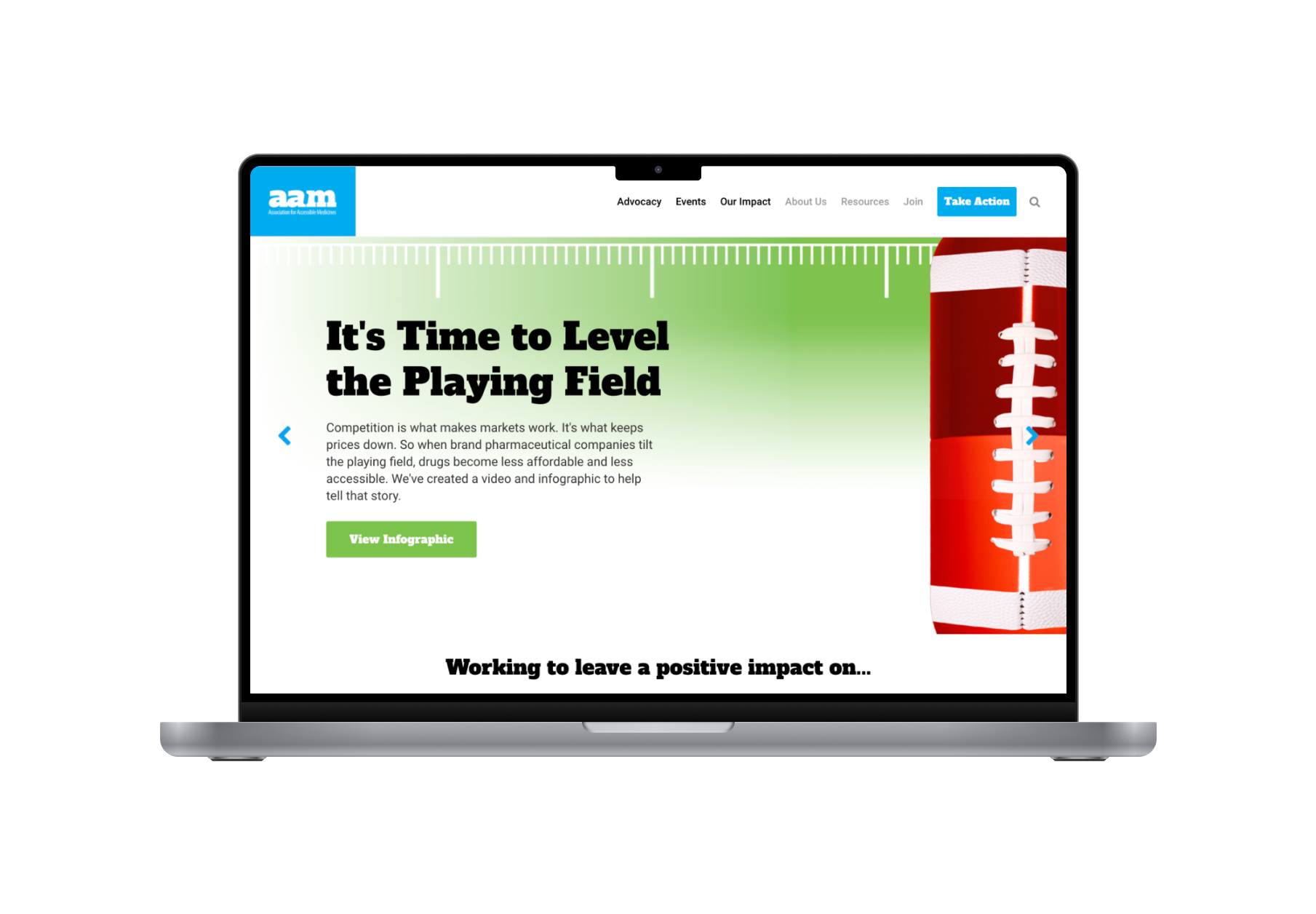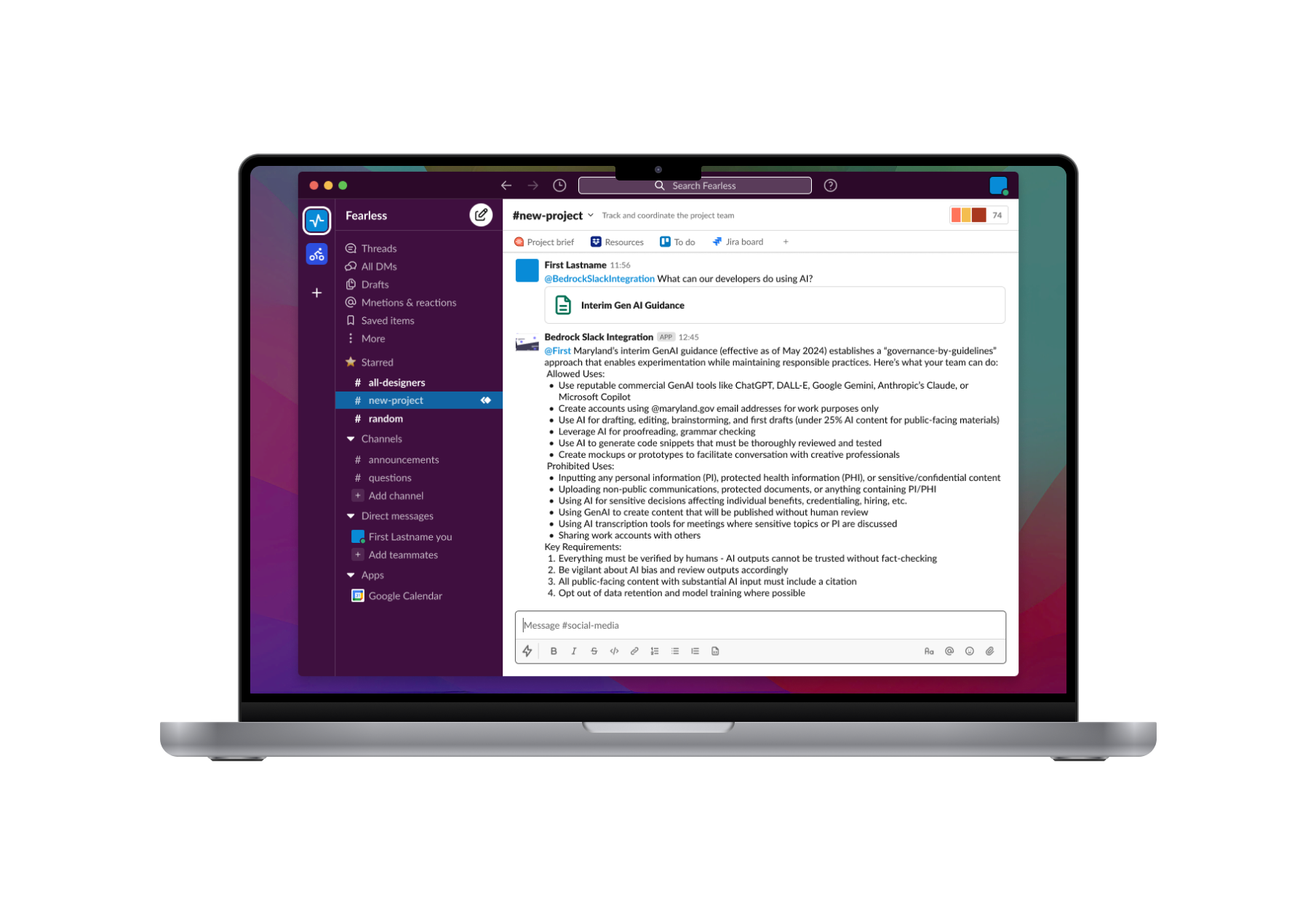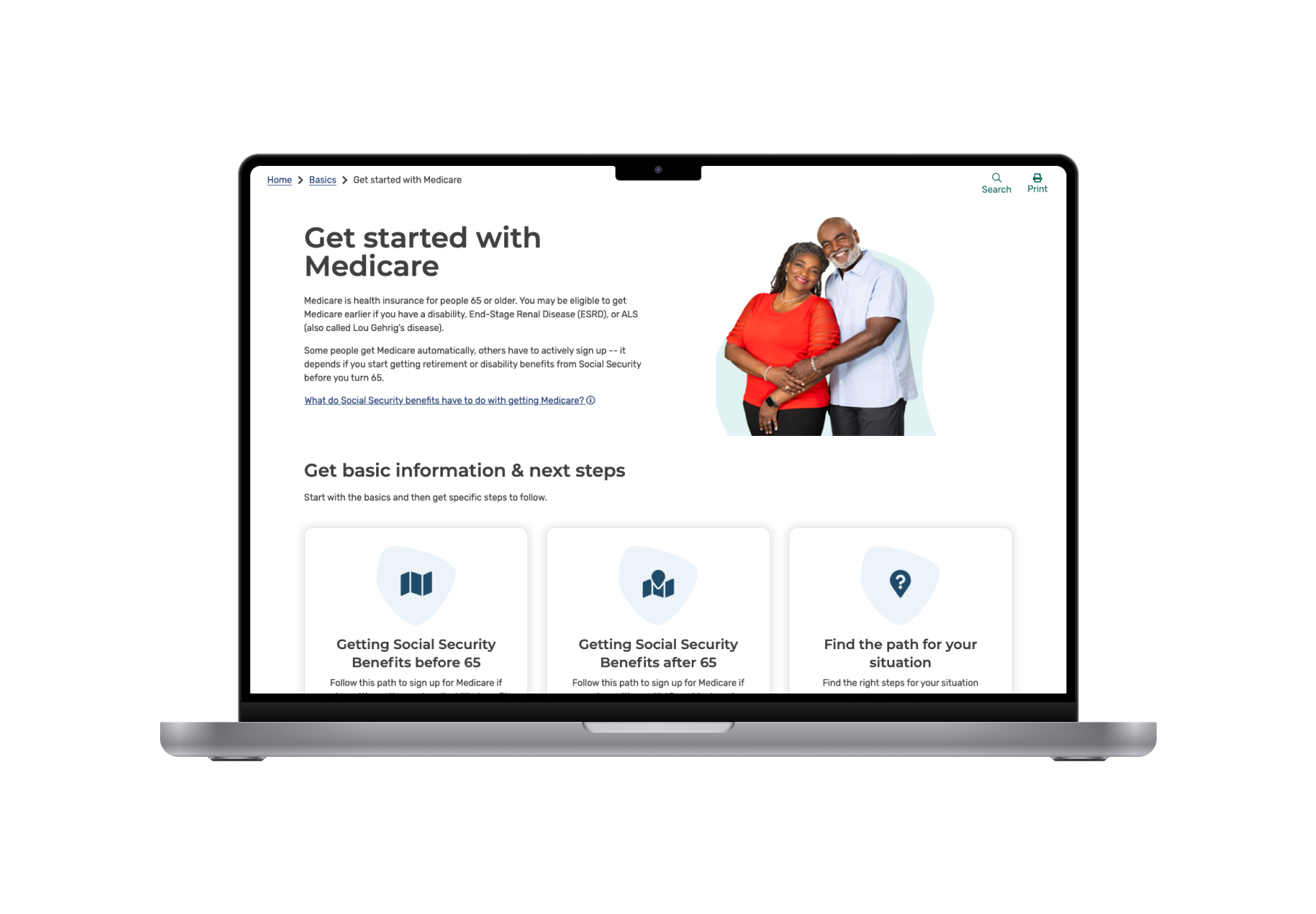
Transforming a dated website into a modern hub for information about biosimilar medicines
We designed a new website to help the advocates for generic and biosimilar medicines and drive engagement with their users and bring their brand to life.
We designed and prototyped a Slackbot that streamlines project onboarding, delivering document summaries and task liststhat help our team find the right information at the right time. Our project tied for third in the 2025 Fearless Purple Hackathon despite an unfinished body of work.

If you've ever started a new project, you know the potential time it takes to ramp up and get familiar with the work you'll be doing! For the past ten years, I've been a part of contractor teams working in a consulting capacity, and for us, that problem is even more substantial, because teams are often expected to be ready to deliver greatness on Day 1.
Our team designed a Slackbot that guides new contractors through onboarding. We intended for our Slackbot to provide essential first steps, answers FAQs, and connect the team with the right resources, all within their daily workflow.
I was the sole designer working on a team of five, including a product manager and three engineers, but we all worked cross-functionally instead of within our roles.
This project took place over two weeks in April 2025 as part of the first Fearless Purple Internal Hackathon.
Slack API, AWS Bedrock, AWS App Studio, Prompt Engineering, Value Proposition Canvas, Figma
Our group had cross-functional representation from various roles across the company, including product, design, engineering, and data.
We hosted a collaborative workshop, facilitated by our design and product folks, to brainstorm on potential ideas, select one of those ideas, and identify our definition of done.
Once we had a plan for what we wanted to do, we quickly gathered data on how useful and usable our idea would be. Here, we spoke to other colleagues who would become future users of this tool as well as leadership stakeholders to understand the data available and any legal/regulatory concerns we should look out for.
As we learned more about the potential data available, we had to revise our proposal to account for learnings from our team. Most notably, we identified that this project tool could primarily only be used for early stage project work, like onboarding, since those tasks primarily rely on either publicly available information or company proprietary information.
Now that we had an idea, we needed to figure out how we'd build it. We explored technical capabilities of the tools within our AWS sandbox, including tools like AWS App Studio, Amplify, Sagemaker, and more. Each person was self-directed in their discovery, which was useful given our team's distributed skillsets.
Through our technical discovery, we identified the potential for a connection with Slack, allowing us to create a tool that existed within the user's workflow as opposed to creating a whole new tool with its own interface (which would likely be a barrier for entry to some folks).
Now that we had clearer direction, we could break apart the project into multiple tasks and begin working on them in an Agile fashion. We were unable to complete our entire scope of work within the time allotted due to technical difficulties setting up the Slack integration, so toward the end, we packaged up our existing findings and documentation for a final handoff to the hackathon team for review.
We ran a value proposition canvas workshop early in the project to clarify what we were aiming to build and to make sure it would be both usable and valuable for the team. The version of the canvas we used was a modified take on the standard one and ended up working well for this kind of service design and AI-focused project. It’s a flexible tool that we could easily use for similar initiatives in the future.

Before we decided on our Slack integration approach, we explored the capabilities for interfaces within our AWS toolbox.
We built a functional prototype of our app in App Studio, focused on the leadership view, where multiple programs could be seen alongside eachother.
We also built a simple prototype using Amplify, and were investigating how we retrofit that prototype to our app as we shifted gears for the Slack approach.

To support how our app functions, we wrote a system prompt to clarify the tool’s role within our workflow, along with example prompts that reviewers could try out in practice. This approach gave everyone a clearer picture of how people might use the app on a day-to-day basis, making it easier to gather feedback during our review sessions.

As the deadline got closer and we weren’t able to get the Slack integration fully functional, we shifted our demo approach. Instead of a live demo, we used walkthroughs and supporting materials to help the judges understand how the tool was intended to work.

We documented our work in detail for the hackathon handoff, aiming to make it easy for others to pick up where we left off. We also made use of AI to generate some of the supporting documentation, which sped up the process and provided us with another perspective on how the team could use the work in future iterations.


We designed a new website to help the advocates for generic and biosimilar medicines and drive engagement with their users and bring their brand to life.

We created customized views of coming of ager journeys to Medicare based on their scenarios. Our improvements resulted in improved access to Medicare applications, improved customer satisfaction, and more personalized guidance.

We partnered with the regional health system to redesign their public-facing website to serve as a gateway to the Digital Front Door project, a project to merge all digital touchpoints and improve how they direct patients to the appropriate form of care.